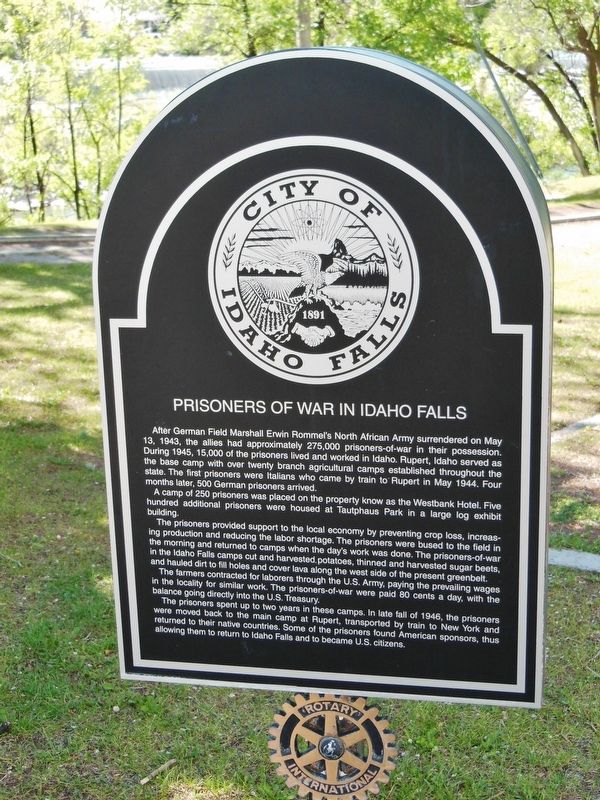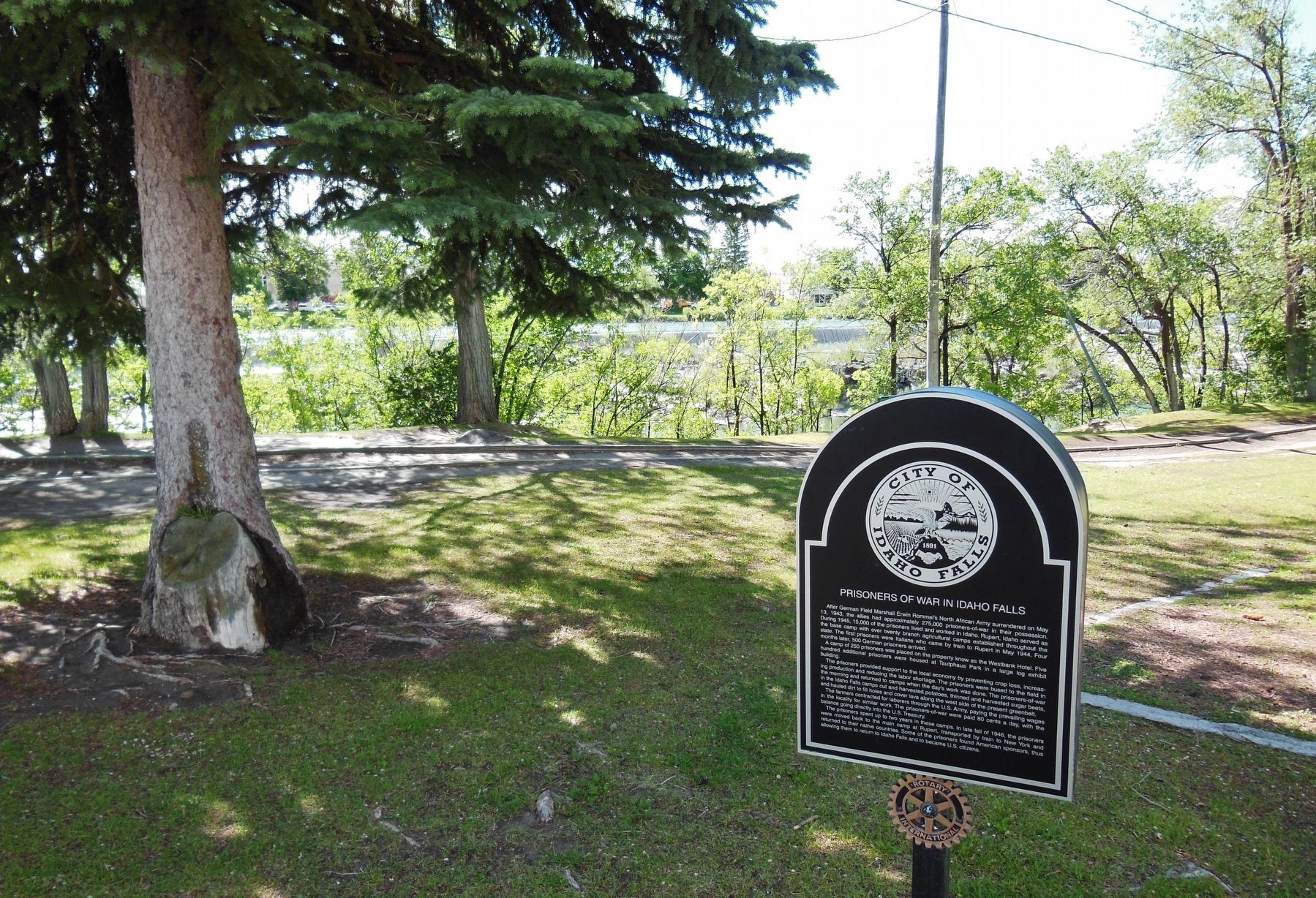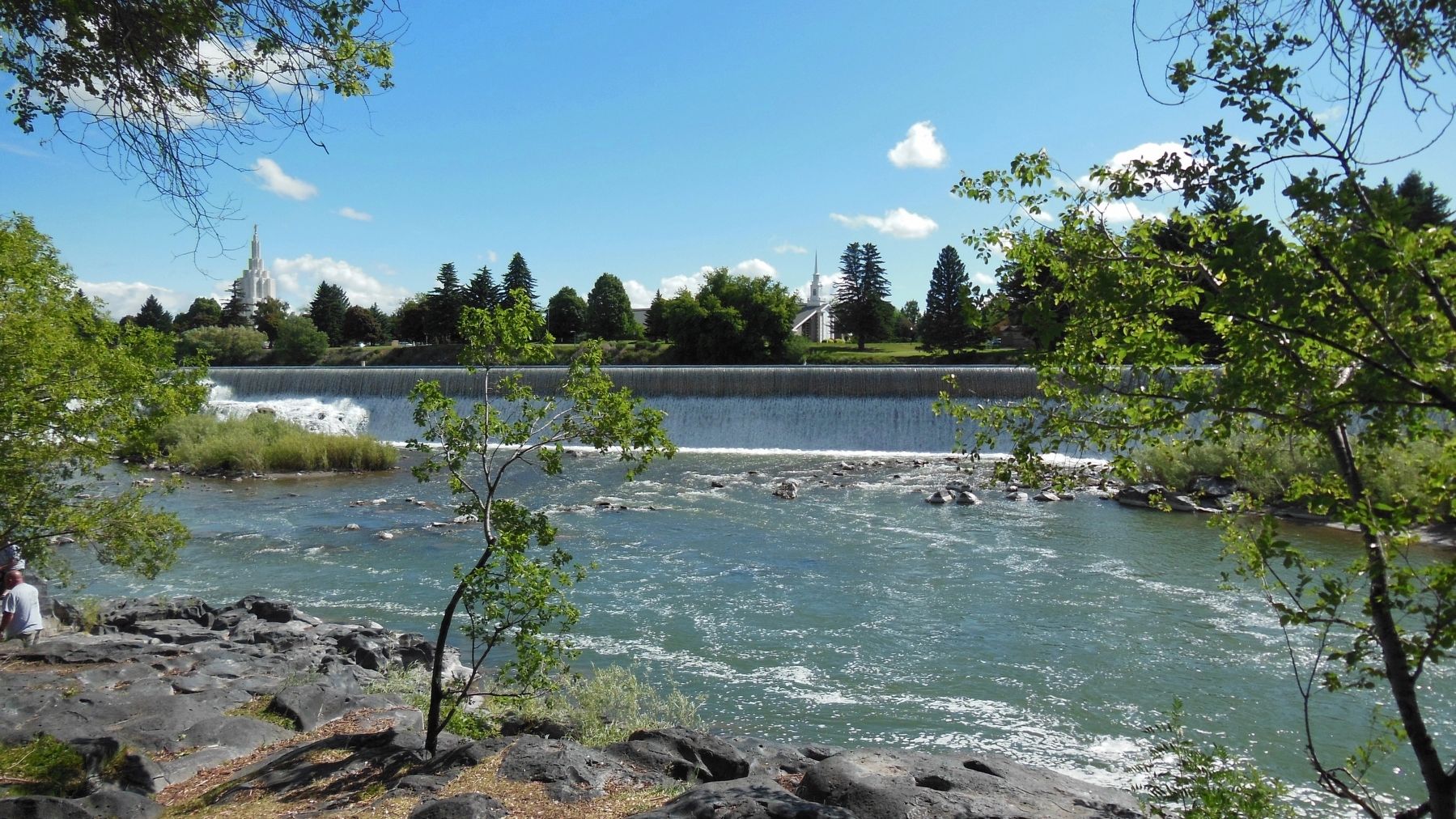Idaho Falls in Bonneville County, Idaho — The American West (Mountains)
Prisoners of War in Idaho Falls

Photographed By Cosmos Mariner, June 20, 2013
1. Prisoners of War in Idaho Falls Marker
"WWII POW Camps in Idaho?!"
BYU-Idaho Special Collections and Archives website entry
Click for more information.
BYU-Idaho Special Collections and Archives website entry
Click for more information.
After German Field Marshall Erwin Rommel’s North African Army surrendered on May 13, 1943, the allies had approximately 275,000 prisoners-of-war in their possession. During 1945, 15,000 of the prisoners lived and worked in Idaho. Rupert, Idaho served as the base camp with over twenty branch agricultural camps established throughout the state. The first prisoners were Italians who came by train to Rupert in May 1944. Four months later, 500 German prisoners arrived.
A camp of 250 prisoners was placed on the property known as the Westbank Hotel. Five hundred additional prisoners were housed at Tautphaus Park in a large log exhibit building.
The prisoners provided support to the local economy by preventing crop loss, increasing production and reducing the labor shortage. The prisoners were bused to the field in the morning and returned to camps when the day’s work was done. The prisoners-of-war in the Idaho Falls camps cut and harvested potatoes, thinned and harvested sugar beets, and hauled dirt to fill holes and cover lava along the west side of the present greenbelt.
The farmers contracted for laborers through the U.S. Army, paying the prevailing wages in the locality for similar work. The prisoners-of-war were paid 80 cents a day, with the balance going directly into the U.S. Treasury.
The prisoners spent up to two years in these camps. In late fall of 1946, the prisoners were moved back to the main camp at Rupert, transported by train to New York and returned to their native countries. Some of the prisoners found American sponsors, thus allowing them to return to Idaho Falls and to become U.S. citizens.
Topics. This historical marker is listed in these topic lists: Agriculture • Industry & Commerce • War, World II.
Location. 43° 29.772′ N, 112° 2.657′ W. Marker is in Idaho Falls, Idaho, in Bonneville County. Marker is on Idaho Falls Greenbelt Trail, 0.2 miles north of West Broadway Street, on the right when traveling north. Marker is located on the Idaho Falls Greenbelt Trail, between River Parkway and the Snake River. Touch for map. Marker is in this post office area: Idaho Falls ID 83402, United States of America. Touch for directions.
Other nearby markers. At least 8 other markers are within walking distance of this marker. Snake River Bridge (within shouting distance of this marker); Upper Snake River Valley Irrigation (approx. 0.2 miles away); The Idaho Falls LDS Hospital and School of Nursing (approx. 0.2 miles away); Eagle Rock Meeting House (approx. 0.2 miles away); Idaho Falls Idaho Temple (approx. 0.2 miles away); Native American Encampments (approx. ¼ mile away); The Odd Fellows
(approx. ¼ mile away); Eagle Rock Crossing (approx. ¼ mile away). Touch for a list and map of all markers in Idaho Falls.
Also see . . . Camp Rupert. Wikipedia entry:
POWs would set up an army-style branch camp to plant and harvest a crop, or to simply harvest the crop. They would be transported from camp to the field in a truck. Approximately 15 prisoners were in a truck with one guard. The POWs, requested by a farmer, would be transported by the farmer to his field. The farmer and the War Labor Board assigned a quota to the POWs. German-language information was provided to instruct the prisoners how to accomplish the task. These ranged from leaflets to a German-language film produced by the Utah-Idaho Sugar Company. Farmers were expected to guard the POWs. This led to complaints, such as from Utah-Idaho Sugar Company, complaining that the farmer couldn't get his other work done. It (Submitted on November 23, 2017, by Cosmos Mariner of Cape Canaveral, Florida.)
Credits. This page was last revised on September 3, 2021. It was originally submitted on November 23, 2017, by Cosmos Mariner of Cape Canaveral, Florida. This page has been viewed 1,624 times since then and 222 times this year. Photos: 1, 2, 3. submitted on November 23, 2017, by Cosmos Mariner of Cape Canaveral, Florida. • Bill Pfingsten was the editor who published this page.

